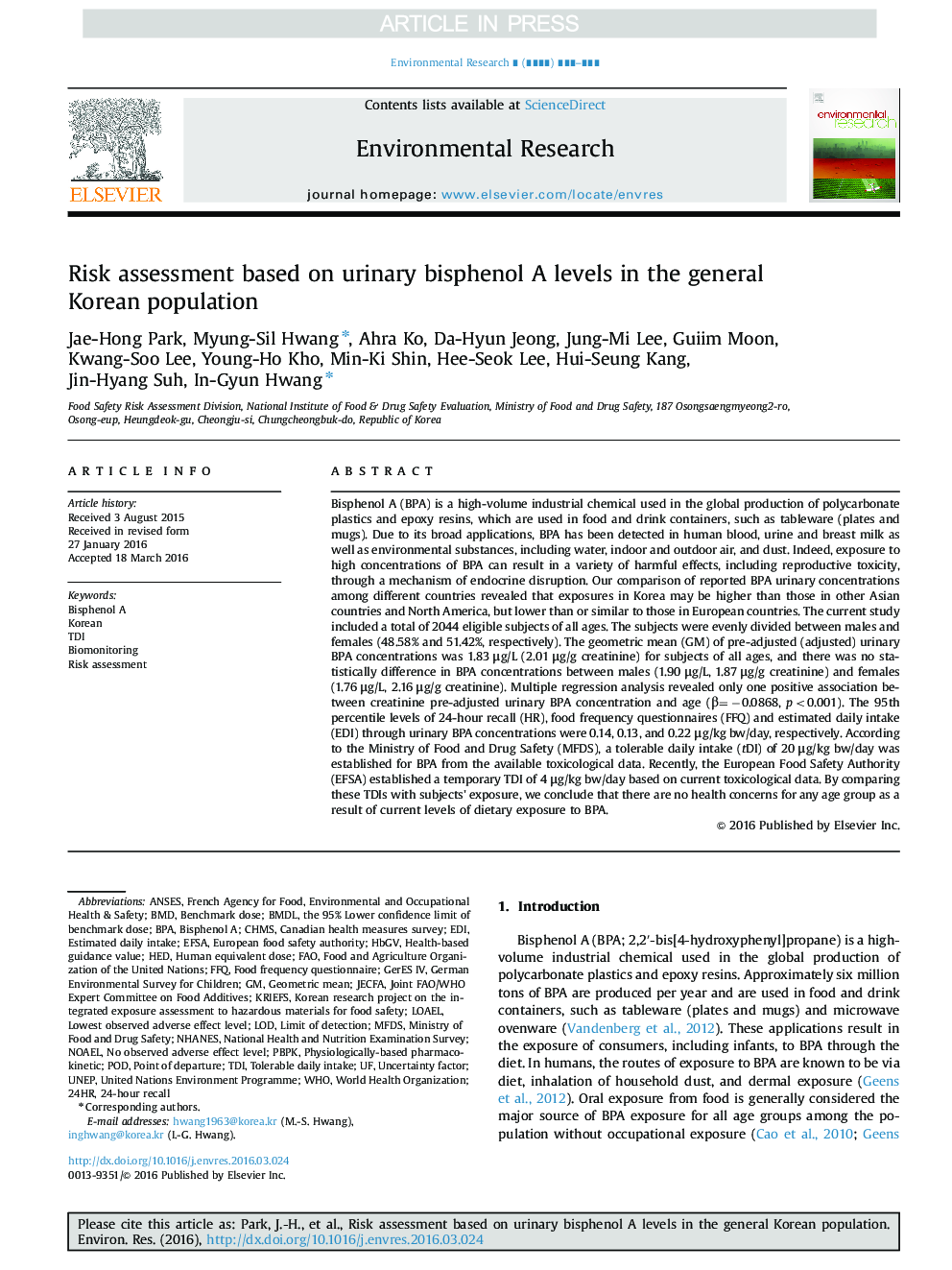| Article ID | Journal | Published Year | Pages | File Type |
|---|---|---|---|---|
| 6351099 | Environmental Research | 2016 | 10 Pages |
Abstract
Bisphenol A (BPA) is a high-volume industrial chemical used in the global production of polycarbonate plastics and epoxy resins, which are used in food and drink containers, such as tableware (plates and mugs). Due to its broad applications, BPA has been detected in human blood, urine and breast milk as well as environmental substances, including water, indoor and outdoor air, and dust. Indeed, exposure to high concentrations of BPA can result in a variety of harmful effects, including reproductive toxicity, through a mechanism of endocrine disruption. Our comparison of reported BPA urinary concentrations among different countries revealed that exposures in Korea may be higher than those in other Asian countries and North America, but lower than or similar to those in European countries. The current study included a total of 2044 eligible subjects of all ages. The subjects were evenly divided between males and females (48.58% and 51.42%, respectively). The geometric mean (GM) of pre-adjusted (adjusted) urinary BPA concentrations was 1.83 μg/L (2.01 μg/g creatinine) for subjects of all ages, and there was no statistically difference in BPA concentrations between males (1.90 μg/L, 1.87 μg/g creatinine) and females (1.76 μg/L, 2.16 μg/g creatinine). Multiple regression analysis revealed only one positive association between creatinine pre-adjusted urinary BPA concentration and age (β=â0.0868, p<0.001). The 95th percentile levels of 24-hour recall (HR), food frequency questionnaires (FFQ) and estimated daily intake (EDI) through urinary BPA concentrations were 0.14, 0.13, and 0.22 μg/kg bw/day, respectively. According to the Ministry of Food and Drug Safety (MFDS), a tolerable daily intake (tDI) of 20 μg/kg bw/day was established for BPA from the available toxicological data. Recently, the European Food Safety Authority (EFSA) established a temporary TDI of 4 μg/kg bw/day based on current toxicological data. By comparing these TDIs with subjects' exposure, we conclude that there are no health concerns for any age group as a result of current levels of dietary exposure to BPA.
Keywords
BPAHealth-based guidance valueBMDLJECFAEDIBMDEFSAFFQHEDCHMSFrench Agency for Food, Environmental and Occupational Health & SafetyEuropean Food Safety AuthorityCanadian Health Measures SurveyBisphenol AEstimated daily intakeANSESbenchmark doseHuman equivalent doseFood and Agriculture Organization of the United NationsFAOJoint FAO/WHO Expert Committee on Food AdditivesGeometric meanFFQ, Food Frequency Questionnaire
Related Topics
Life Sciences
Environmental Science
Health, Toxicology and Mutagenesis
Authors
Jae-Hong Park, Myung-Sil Hwang, Ahra Ko, Da-Hyun Jeong, Jung-Mi Lee, Guiim Moon, Kwang-Soo Lee, Young-Ho Kho, Min-Ki Shin, Hee-Seok Lee, Hui-Seung Kang, Jin-Hyang Suh, In-Gyun Hwang,
